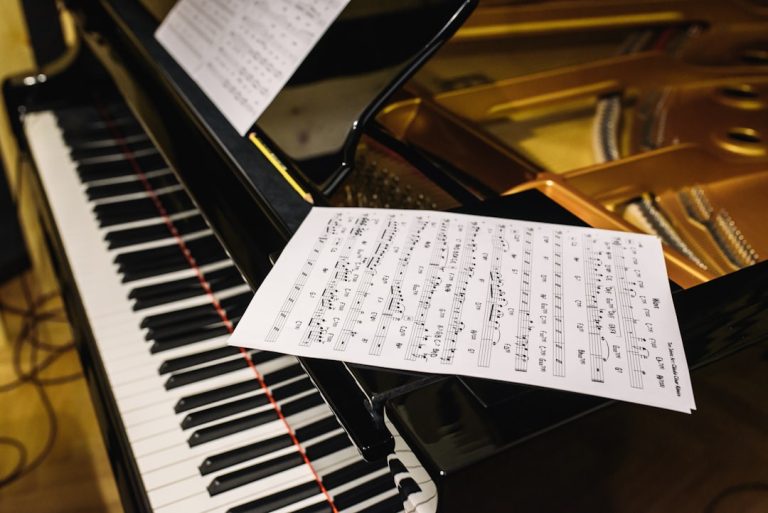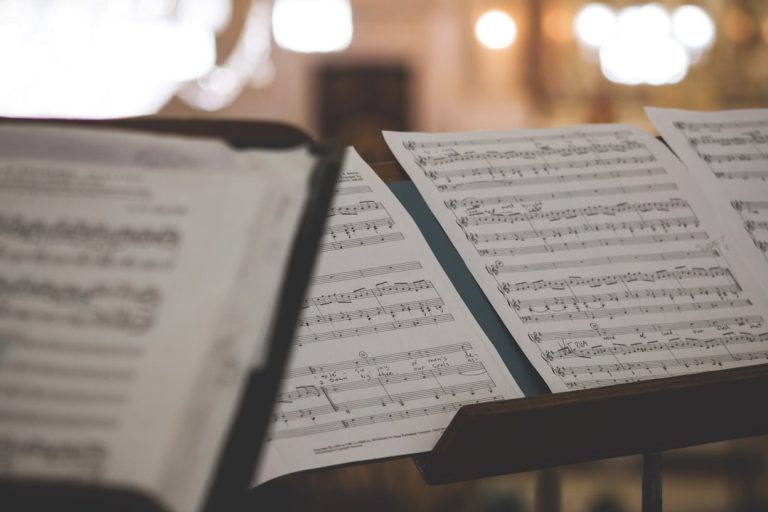
Lyrical analysis is a multifaceted approach to understanding the deeper meanings embedded within song lyrics. It transcends mere appreciation of melody and rhythm, delving into the intricate web of language, emotion, and cultural significance that lyrics often encapsulate. The art of analyzing lyrics allows listeners to engage with music on a more profound level, revealing the layers of meaning that can resonate with personal experiences or societal issues.
This analytical process not only enhances the enjoyment of music but also fosters a greater appreciation for the artistry involved in songwriting. The significance of lyrical analysis is underscored by the fact that lyrics often serve as a reflection of the human experience. They can articulate feelings of love, loss, joy, and despair, providing a voice to emotions that may be difficult to express otherwise.
By dissecting the words and phrases chosen by songwriters, one can uncover the nuances of their intent and the broader themes they wish to convey. This exploration can lead to a richer understanding of both the individual song and the cultural landscape from which it emerges.
Key Takeaways
- Lyrical analysis involves examining the words and themes of song lyrics to gain a deeper understanding of their meaning and impact.
- Literary devices such as similes, metaphors, and alliteration can be identified in lyrics to enhance the poetic and artistic elements of a song.
- Symbolism and metaphors in songs can convey deeper meanings and emotions, adding layers of complexity to the lyrics.
- Exploring the historical and cultural context of lyrics can provide insight into the societal influences and perspectives that shaped the song.
- Analyzing the emotional and psychological impact of lyrics can help listeners connect with the music on a personal level and understand its effect on their emotions.
Identifying Literary Devices in Lyrics
One of the first steps in lyrical analysis is identifying the literary devices employed by songwriters. These devices, which include alliteration, assonance, rhyme schemes, and imagery, serve to enhance the emotional impact of the lyrics and create a more engaging listening experience. For instance, consider the use of alliteration in a line where multiple words begin with the same consonant sound; this technique can create a rhythmic quality that draws listeners in and emphasizes particular phrases.
Similarly, assonance—the repetition of vowel sounds—can evoke specific feelings or moods, adding depth to the lyrical content. Imagery is another powerful literary device frequently found in song lyrics. Through vivid descriptions and sensory details, songwriters can paint pictures in the minds of their listeners, allowing them to visualize the scenes being described.
For example, in Bob Dylan’s “A Hard Rain’s A-Gonna Fall,” the imagery of a “blue-eyed son” and “darkness” conjures a sense of foreboding and urgency. By analyzing these devices, listeners can gain insight into how they contribute to the overall message and emotional resonance of a song.
Understanding Symbolism and Metaphors in Songs

Symbolism and metaphors are crucial components of lyrical analysis, as they often convey complex ideas and emotions in a condensed form. A symbol is an object or action that represents something beyond its literal meaning, while a metaphor makes a direct comparison between two unrelated things to highlight similarities. For instance, in Leonard Cohen’s “Suzanne,” the river serves as a symbol of both love and longing, representing the fluidity of relationships and the passage of time.
By examining these symbols, listeners can uncover deeper meanings that may not be immediately apparent. Metaphors can also enrich lyrics by allowing songwriters to express abstract concepts through tangible imagery.
The line “I was thinking on the drive down, any time now he’s gonna say it’s love” encapsulates the tension between hope and disappointment. Analyzing these metaphors enables listeners to connect with the emotional core of the song, fostering a more profound understanding of its themes.
Exploring the Historical and Cultural Context of Lyrics
| Category | Data/Metrics |
|---|---|
| Time Period | Medieval, Renaissance, Baroque, Classical, Romantic, Modern |
| Geographical Context | Europe, Asia, Africa, Americas, Oceania |
| Historical Events | Wars, Revolutions, Social Movements, Technological Advancements |
| Cultural Influences | Religion, Philosophy, Literature, Art, Politics |
| Language | English, Spanish, French, German, Italian, etc. |
To fully appreciate the depth of song lyrics, it is essential to consider their historical and cultural context. Music often serves as a reflection of societal values, struggles, and movements at specific points in time. For example, songs from the civil rights era, such as Sam Cooke’s “A Change Is Gonna Come,” encapsulate the hopes and frustrations of a generation fighting for equality.
Understanding the historical backdrop against which these songs were written can illuminate their significance and impact. Moreover, cultural context plays a vital role in shaping lyrical content. Different genres of music often draw from distinct cultural traditions and experiences, influencing the themes and language used in their lyrics.
For instance, hip-hop frequently addresses issues related to race, identity, and social justice, while country music often explores themes of love, loss, and rural life. By situating lyrics within their cultural framework, listeners can gain insight into how artists respond to their environments and express their identities through music.
Analyzing the Emotional and Psychological Impact of Lyrics
The emotional and psychological impact of lyrics cannot be overstated; they have the power to evoke strong feelings and resonate with listeners on a personal level. Many people turn to music during times of joy or sorrow, finding solace in lyrics that articulate their own experiences. For instance, Adele’s “Someone Like You” captures the pain of heartbreak with poignant lyrics that resonate with anyone who has experienced loss.
The raw vulnerability expressed in her words allows listeners to connect with their own emotions, creating a shared experience through music. Furthermore, lyrics can serve as a form of catharsis for both artists and listeners alike. Songwriters often channel their personal struggles into their work, creating an outlet for their emotions that can resonate with others facing similar challenges.
This therapeutic aspect of songwriting is evident in songs like Linkin Park’s “Numb,” where themes of alienation and pressure are articulated through powerful lyrics that speak to many individuals grappling with mental health issues. By analyzing these emotional dimensions, one can appreciate how lyrics function as both personal expression and collective experience.
Unpacking the Narrative and Storytelling Elements in Songs

The Art of Narrative Unfolding
The narrative of “A Boy Named Sue” unfolds with humor and poignancy, exploring themes of identity and resilience through its engaging plot. Songs often use traditional storytelling elements like character development and conflict resolution, but they also employ nonlinear narratives or fragmented techniques to convey complex emotions or experiences. For instance, Fiona Apple’s “Paper Bag” uses a series of vignettes to reflect on disillusionment and self-discovery, rather than following a straightforward narrative arc.
Unpacking the Storytelling Elements
By examining the storytelling elements within the lyrics, listeners can appreciate how songwriters craft tales that resonate on multiple levels. This close analysis reveals the intricate craftsmanship that goes into creating a song that tells a story.
The Lasting Impact of Musical Storytelling
The storytelling aspect of music has a lasting impact on listeners, drawing them into a world crafted by the songwriter’s imagination. This connection can lead to a deeper appreciation and understanding of the music, making it more relatable and memorable.
Examining the Relationship Between Music and Lyrics
The interplay between music and lyrics is fundamental to understanding a song’s overall impact. While lyrics convey meaning through words alone, they are often enhanced by musical elements such as melody, harmony, rhythm, and instrumentation. The combination of these components creates an emotional landscape that amplifies the message conveyed by the lyrics.
For instance, in Radiohead’s “Creep,” the haunting melody complements the feelings of alienation expressed in the lyrics, creating an atmosphere that resonates deeply with listeners. Moreover, different musical genres often employ distinct approaches to integrating lyrics with music. In pop music, catchy hooks and choruses are designed to be memorable and accessible, while in folk or indie genres, storytelling may take precedence over commercial appeal.
The relationship between music and lyrics can also evolve over time; for example, many classic rock songs have been reinterpreted through modern arrangements that bring new life to their original messages. By examining this relationship, one can gain insight into how music enhances lyrical meaning and vice versa.
Applying Lyrical Analysis Techniques to Different Genres of Music
Lyrical analysis techniques can be applied across various genres of music, each offering unique opportunities for exploration. In hip-hop, for instance, wordplay and rhyme schemes are often central to lyrical composition. Artists like Nas or Kendrick Lamar utilize intricate rhyme patterns and allusions to convey social commentary or personal narratives within their verses.
Analyzing these elements reveals not only technical skill but also deeper messages about identity and culture. In contrast, genres like country music may prioritize storytelling through straightforward narratives that evoke relatable emotions tied to everyday life experiences. Songs by artists such as Dolly Parton or Chris Stapleton often explore themes of love, heartache, or nostalgia through vivid imagery and relatable characters.
By applying lyrical analysis techniques tailored to each genre’s conventions—whether focusing on rhyme schemes in hip-hop or narrative structure in country—listeners can uncover rich layers of meaning that enhance their appreciation for diverse musical expressions. Through this comprehensive exploration of lyrical analysis—from identifying literary devices to examining emotional impacts—listeners are equipped with tools to engage more deeply with music across genres. This analytical approach not only enriches one’s understanding but also fosters a greater connection between artists and audiences as they navigate shared human experiences through song.
If you are interested in learning more about lyrical analysis techniques, you may want to check out this article on song lyrics. This article delves into the importance of understanding the meaning behind the words in a song and how to effectively analyze them. By exploring the themes, metaphors, and symbolism within song lyrics, you can gain a deeper appreciation for the artistry and storytelling within music.
FAQs
What are lyrical analysis techniques?
Lyrical analysis techniques are methods used to critically examine and interpret the lyrics of a song. These techniques can involve examining the themes, symbolism, word choice, and overall message of the lyrics.
Why are lyrical analysis techniques important?
Lyrical analysis techniques are important because they allow listeners to gain a deeper understanding of the meaning and intention behind a song’s lyrics. This can enhance the overall listening experience and provide insight into the artist’s perspective.
What are some common lyrical analysis techniques?
Some common lyrical analysis techniques include examining the use of metaphor and simile, analyzing the narrative structure of the lyrics, exploring the cultural and historical context of the song, and considering the emotional impact of the lyrics.
How can lyrical analysis techniques be applied?
Lyrical analysis techniques can be applied by closely reading and listening to the lyrics of a song, taking note of recurring themes and imagery, and considering the broader context in which the song was created. Additionally, comparing the lyrics to the music and vocal delivery can provide further insight.
What can be gained from using lyrical analysis techniques?
Using lyrical analysis techniques can provide a deeper understanding of the artist’s message, shed light on personal and societal themes, and offer a new perspective on the emotional and artistic impact of a song. This can lead to a more meaningful and enriching listening experience.






